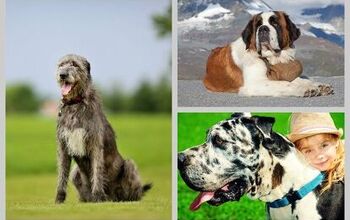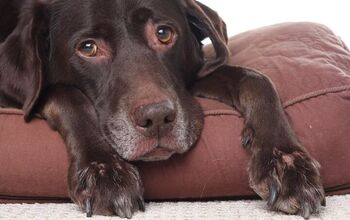Bullmastiff


About Bullmastiff
Powerfully built and strong, you wouldn’t want to meet up with a Bullmastiff in a dark alley. These large dogs boast great endurance, strength, and a solid body. The first impression you get when you see a Bullmastiff is a muscular, menacing looking dog, which makes it perfect for protecting your family.
A natural guardian, the Bullmastiff is protective and fearless when it comes to protecting its master and family. You may find that your dog is standoffish with strangers at first (a good quality in a guard dog) but this breed is loving and affectionate towards friends and family members. Let’s find out more about the Bullmastiff.
These large dogs boast great endurance, strength, and a solid body.
Kept by gameskeepers in the late 19th century, the Bullmastiff was used to scare off poachers in England. In 1924, English Kennel Club standardized and officially recognized the Bullmastiff as a purebred breed, followed in 1933 by the American Kennel Club. The Diamond Society of South Africa has used Bullmastiffs as watchdogs, and worldwide, this fierce, intelligent breed have helped in police and army work, and been used as assistance animals and hunting guards. Reliable, smart family guardians and companions, the Bullmastiff loves comforting, playing, and living with families, and will make a great addition to most lifestyles.
The Bullmastiff is a cross between Bulldogs and Mastiffs and was bred to be a poacher-hunting dog.
The Bullmastiff was recognized by the AKC in 1933.
The Bullmastiff does well on a raw diet or on premium, high-quality commercial dog food. Bullmastiffs love apples, bananas, strawberries and tomatoes, but be careful when giving your dog acidic type fruits as it may cause diarrhea. Feed your Bullmastiff several small meals instead of one large one in order to prevent bloat.
A natural guardian, the Bullmastiff is protective and fearless when it comes to protecting its master and family.
Since the Bullmastiffs is such a large, powerfully built, protective dog, it will need early socialization and training. When a dog is well socialized and well trained, it will turn into a trustworthy and confident pet. From the get-go, your Bullmastiff will need to learn that you are in charge. Since this breed is devoted and protective, it has an intense need to shield and protect its family from any type of danger, and you need to be able to control your dog. Start socialization young and let your dog experience new sights, smells, sounds, places, people and animals – it will help turn your Bullmastiff into a confident, well-adjusted, non-aggressive pet. When raised with children and other animals, the Bullmastiff will form a loving and playful relationship with them.
Socialize and train your Bullmastiff using positive reinforcement, kindness, and patience. As well, training sessions need to be interesting and fun for both you and your dog.
Male Bullmastiffs weigh 110 to 133 pounds, while females weigh 100 to 120 pounds.
The Bullmastiff is a loyal, devoted, courageous dog that makes an excellent guard dog. Your pooch will love your family and will defend and look after them. Its natural instinct is not to attack but to place itself between its master and stranger or knock the intruder to the ground and hold him down. Even though it wouldn’t normally attack or bite, if it is afraid for its family, it will become determined and aggressive.
The Bullmastiff is usually loyal, calm, loving, and docile, and boasts an even-tempered nature. This breed has no fear but can occasionally become willful, so train and socialize your dog from an early age so it knows appropriate behavior. Because of its large size, young children require supervision when around the dog so they do not get hurt accidentally. Many Bullmastiffs get along well with other dogs, while others will only tolerate male dogs or female dogs.
Bullmastiffs are generally a healthy breed of dog but some health issues may occur. These include hip and elbow dysplasia (heritable condition can lead to lameness and severe pain), bloat or gastric torsion (a serious condition that affects large sized dogs with deep chests),
Hypothyroidism (thyroid hormone deficiency causes lack of energy, obesity, and infertility), skin problems (this breed’s sensitive skin is prone to irritation, sores, and rashes), eye problems, cancer, tumors, and cardiac disease.
Bullmastiffs have a life expectancy of 8 to 15 years.
Bullmastiffs are not active dogs – in fact, this breed just likes to take it easy and are happy lazing around the house and doing as little as possible. Be sure to get your dog outside so it stays active. Your Bullmastiff needs enough daily exercise to keep it in shape. Take your dog out for daily walks and play in a large fenced backyard. Moderate, regular exercise and monitoring its meals will keep your dog from becoming overweight.
The Bullmastiff is a loyal, devoted, courageous dog that makes an excellent guard dog.
The American Kennel Club says this about the breed: “The Bullmastiff is a strong and powerfully built animal that possesses great intelligence and a willingness to please, making them ideal family companions and protectors. Although large, the breed remains both agile and active and is successful in conformation, obedience, agility, tracking, carting and therapy work.”
With its dense, short coat, the Bullmastiff is protected against the cold, snow, and rain. Its coat comes in brindle, fawn, or red with dark ears and muzzle. On its chest, a Bullmastiff may have a small white mark.
The shorthaired coat is easy to groom. Brush its coat using a firm bristle brush or rubber brush and metal comb, which will help remove loose hair and dander while keeping its coat healthy and shiny. Bullmastiffs do shed and regular brushing will help cut down on the amount of fur found around the house. Only give your Bullmastiff a bath when required using a quality shampoo made specifically for dogs.
You need to set down the rules as soon as you bring your Bullmastiff puppy home. Start training and socialization as early as possible so your puppy becomes accustomed to different experiences, animals and people.
Photo credit: Eric Isselee/Shutterstock

Amy Tokic, Editor of PetGuide.com, is a passionate animal lover and proud pet parent of Oscar, a Shih Tzu/Chihuahua cross, and Zed, a Japanese Chin. Her love of animals began in kindergarten, when she brought her stuffed dog Snoopy into class with her every day. Now, she writes about her adventures in pet ownership and tirelessly researches products, news and health related issues she can share with other animal enthusiasts. In her free time, Amy loves perusing used book and record stores, obsessing over the latest pet products available and chasing squirrels with wild abandon (a habit attributed to spending too much time with her pooches).
More by Amy Tokic

























